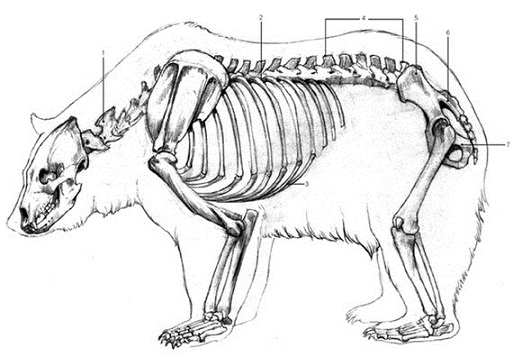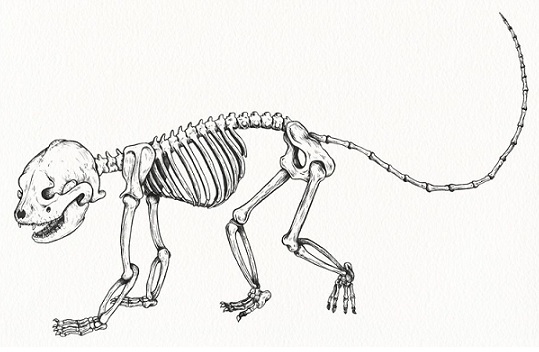Products You May Like
The Giant Panda can be easily recognized by the striking contrast color combination of its black and white fur. Native to China, Panda is categorized as an omnivorous mammal, although its significant diet is bamboo besides honey, eggs, yam, fish, banana, and shrub leaves.

The Panda weighs between 120-150 kilograms, stands two and a half feet tall at the shoulder, and is approximately five feet long. At four to six inches in length, the Panda also possesses the second-longest tail in the bear family.
Here we provide you with guidelines to draw the skeleton of a Panda.
Things You Will Need
- Pencil
- Paper/ Canvas
- Colors (optional)
- Paint Brush (Optional)
We are considering the profile view of the Panda facing left.
- Skull
- Head: The Panda has a round face.
- a) Draw an oval shape for the head.
- b) The head of the Panda should hang a bit lower.
- Jaws
- a) Draw a ‘V’ shaped line at the beginning of the mouth to outline the upper and lower jaw.
- b) Draw long and sharp teeth between the jaws.
Eyes: Since the Panda has big eyes, draw a big round shape for its eye socket.
- Nose: Draw a curved line just above the upper jaw to depict the hollow of the nose.
- Spinal Column
- Neck Vertebrae
- a) Draw a horizontal line from the base of the head.
- b) Double up the line and draw vertical and small irregular rectangles to make it appear sharp and bony at the edges.
- Back Bone
- a) Elongate the neck vertebra with a slanted line.
- b) Double up this line and draw verticals and diagonal lines to give it a skeletal appearance.
- c) Draw widely spaced, thin rectangular strips on the upper side of the back vertebra.
Ribs
- a) Draw thin, long, and curved rectangular strips beginning from the start of the back vertebra and spreading halfway across the spine section.
- b) The ribs are widely spaced out.
- Forelimbs
- Scapula (Draw Skeleton Panda)
How to Draw 3D Animation – Tips and Tricks
- a) The scapula holds the forelimbs of the Panda and helps in its movements.
- b) Draw a sizeable oblong shape towards the end of the neck vertebrate.
- c) Draw a thin line in the centre of the scapula and shade it.
- Limbs: The Panda’s paw has a thumb and five fingers. The Thumb aids in holding the bamboo while eating.
- a) Draw a vertical line extending out of the Scapula. Double up the line.
- b) Draw a thin rectangular shape to depict the joint.
- c) Draw two diagonal lines extending from the knee joint.
- d) Double up both these lines. Ensure this section looks strong & broad.
- e) At the end of the limb, draw the Panda’s phalanges.
- f) Draw curved claws. (Draw Skeleton Panda)
Note: Draw a pair of forelimbs
- Pelvic
- Hip
- a) From the rear end of the spinal Vertebrae, draw a curved line.
- b) Draw another irregular line to make the hip joint look like a bean shape.
- Hind Limbs
- a) From the base of the hip joint, draw a ‘V’ shaped line.
- b) Double up the lines to give dimension.
- c) Draw a thin rectangular shape at the joints and shade them appropriately.
- d) Draw strong-looking phalanges and the claws of Panda.
Note: Draw a pair of hind limbs
- Tail Vertebrae
- a) Extend a thin & long curved line from the hip joint.
b) Double up this line, draw fine vertical lines on it, and shade it accordingly.
